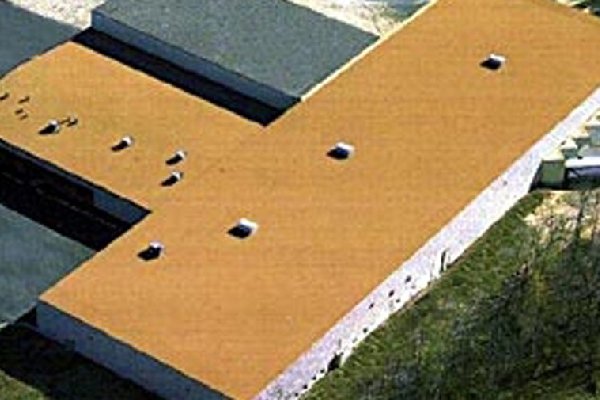Duro-Last vs. TPO Roofing: Which Should Your Business Choose?

Old roofs can be dangerous.
If you don’t replace an aging or damaged roof, you’re putting yourself and your business at risk of water damage, mold growth, and poor interior ventilation. Bad roofs can even damage the structural integrity of your commercial building.
But which type of roof should you buy: Duro-Last or TPO?
We’ve put together this quick guide to help you understand the differences between the two choices and find out which one is better for your business.
So keep reading below.
Duro-Last vs TPO Roofing: What’s the Difference?
Since Duro-Last and TPO are somewhat similar, many people get them confused. But these two roofing types have some very clear differences.
Here’s what you need to know about Duro-Last and TPO.
Duro-Last
Duro-Last is a type of PVC sheet. It’s made from a proprietary thermoplastic formulation of plasticizers, stabilizers, resins, flame retardants, biocides, and U.V. absorbents.
The roofing itself is made of two layers of this formulation sandwiching a knitted scrim. This makes the Duro-Last membrane incredibly durable.
You can buy a Duro-Last roof in a variety of different colors, including whites, greys, tans, and terra cotta.
TPO
TPO, or thermoplastic polyolefin, is a single-ply roofing membrane.
But despite what the name suggests, it isn’t actually made of plastic. Instead, it is a type of rubber made from polypropylene and ethylene-propylene.
This makes TPO lightweight and easy to work with during installation. However, it isn’t as strong as Duro-Last roofing.
Understanding the Pros and Cons of Duro-Last and TPO
Duro-Last and TPO roofing both have their own sets of pros and cons. Unfortunately, the cons of TPO far outweigh the benefits.
Because of this Duo-Last is often a better roofing choice for commercial businesses.
And here’s why.
Duro-Last Is Prefabricated
Your Duro-Last roof will be measured and manufactured to the exact size of your commercial building. This means it will be prefabricated to fit your roof before it even shows up on your property.
Why does that matter?
A prefabricated roof removes about 85% of the seaming that is usually done during the installation process. Fewer seams means better long-term performance, an easy installation, and better protection against leaks.
TPO roofing doesn’t have this advantage.
In order to seal all the seams of a TPO roof, the installer must use hot-air welding equipment. Though this does the trick, it also means the roof won’t last as long or perform as well as Duro-Last roofs.
TPO Isn’t as Durable
The top layer of many TPO roofs is laminated. This lamination can leave the roof open to vulnerabilities and cause it to crack or shrink over time. In fact, most TPO roofs are known to crack quite quickly.
But you don’t have to worry about deterioration when it comes to Duro-Last roofing.
Duro-Last material won’t start to crack or craze. This type of roofing is resistant to harmful chemicals, fire, grease, punctures, and high winds. It can even handle a wide variety of temperature extremes.
Because of this, it’s safe for the hot, humid summers or the cold, snowy winters.
Duro-Last Is Energy-Efficient
Duro-Last roofing is also energy-efficient. In other words, it will help keep the hot air out of your home during summer and the cold air out of your home during the winter.
This means the amount of energy you use to condition the air inside your house will go down—and so will your energy bill!
The surface of many TPO roofs is white, which can help it reflect heat away from the home. But outside of its reflective properties, TPO doesn’t have other energy-efficient qualities.
Duro-Last Is Easy to Install
Duro-last can be installed over an existing roof (any wet areas must be removed). That means you don’t have to worry about ripping your entire old roof off. This will save you money, and will not leave your business without a roof for a time.
And Duro-Last roofing doesn’t require any loud machinery or hot tar. You can continue working in the office without breathing in dangerous fumes or getting distracted by the noise.
The entire installation process will be quick, easy, and safe.
TPO roofs, on the other hand, are not pre-fabricated. Every seam, every curb and vent flashing, must be heat welded together. This increases the amount of time on the roof, and more disruption around your commercial building during work hours—which increases the risk of accidents.
Duro-Last Has the Best Warranties
Duro-Last roofing comes with some of the best warranties in the industry. You can buy warranties that last up to (or even over) 20 years.
And these warranties aren’t full of limitations. Instead, they offer you and your business the maximum amount of protection possible.
If something happens to your roof, you don’t have to worry about spending a lot of money on repairs or—even worse—installing a new roof all over again. Instead, the warranties will help take care of the problem, which means you can keep working in the office without stress.
Which Should You Choose: Duro-Last or TPO Roofing?
So what type of roofing should you buy: Duro-Last or TPO?
If you want a good quality, durable roof that will last decades to come, you should get a Duro-Last roof. It’s easy to install and, if something does go wrong, it has the best warranties in the industry.
Not to mention it will save you money on your energy bill in the long run!
Ready to install a new Duro-Last Roof?
Make sure you click here to get a free estimate today!
